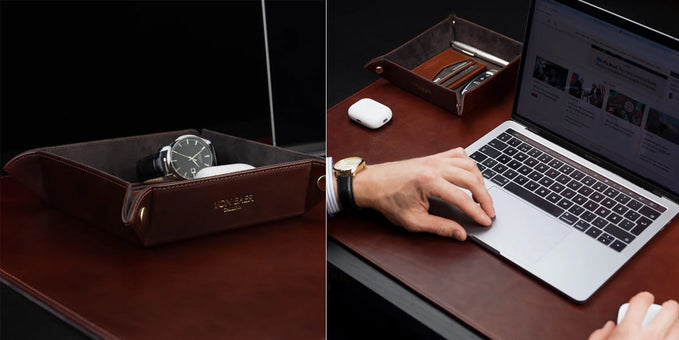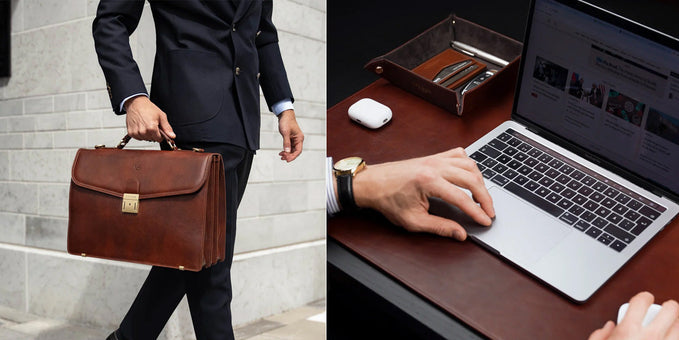How To Rehydrate Leather Properly

As a versatile and timeless material, leather requires care and maintenance to protect its lifespan.
Rehydration is an essential aspect of leather care as leather can become dry, prone to cracking, and brittle if not moisturized adequately.
In this post, we delve into the leather-rehydrating art in this comprehensive guide and provide step-by-step instructions in addition to practical tips, and insights for the achievement of optimal results.
TL;DR - If you just want to hydrate your leather quickly and with 0 fuss, then just buy this leather cream and rub it in, it'll go a long way to doing what the following steps help you with.
Understanding the Hydration Needs of Leather
- It is crucial to understand the nature of leather and the reason hydration is necessary before beginning the process of rehydration.
- Leather is composed of collagen fibers that give it strength and durability and it is derived from the hides of animals.
- Exposure to environmental factors long-term, for example, sunlight, dry air, and heat can cause the natural oils and moisture present in the leather to deplete causing loss of flexibility and dehydration.
Assessing Condition and Rehydration Requirements

- An assessment of the condition of the leather and the optimal method should be the first step in rehydration.
- A visual inspection allows the identification of dehydration signs such as stiffness, cracks, or a dull appearance and is crucial.
- In addition, an understanding of the type of leather being worked on, such as top-grain, full-grain, or suede is essential as different types may require different techniques.
Preparation for Leather Rehydration

- Proper preparation of the leather surface is crucial before beginning the rehydration process.
- Dirt, dust, and debris should be removed to avoid the hindrance of moisture absorption.
- Impurities on the surface can be carefully removed using a soft cloth or brush.
- If the leather already has a coating or finish, suitable products and methods to remove them should be considered.
- Conducting a patch test is advisable to make sure the rehydration product and the leather are compatible.
Rehydration Process Step-by-Step
1. Soaking:
- Fill a suitable container with lukewarm water.
- Completely submerge and cover the leather item with water.
- Let it soak for a specific duration. Check progress from time to time.
- Remove from the water and squeeze out any excess moisture gently.
- Place the item on a clean, dry towel or hang up to air dry. It should be kept away from direct sunlight and heat sources.
- When completely dry, apply a suitable moisturizer or leather conditioner.
- Use a soft cloth or sponge and apply the conditioner using gentle, circular motions. Polish the leather after the conditioner application.
2. Steaming:
- Use a garment steamer or a steam iron set at a low temperature as a steam source.
- In a well-ventilated area, out of direct contact with the source of steam, hang the item.
- Expose the leather to the steam slowly by passing it across the surface.
- Make sure coverage is even passing the steam across the whole of the leather surface area.
- Carefully pat the leather dry with an absorbent, soft cloth.
- Let the leather air dry thoroughly in a well-ventilated area, out of direct sunlight and away from heat sources.
- When fully dry, a suitable leather conditioner or moisturizer may be applied
- Apply the conditioner using a soft cloth or sponge, ensuring uniform coverage. Polish the leather after the conditioner application.
These detailed steps provide you with instructions to rehydrate your leather effectively either by steaming or soaking.
Patience is the key.
Suitable leather conditioners (see our recommended conditioner) will restore suppleness after naturally letting the leather dry and will prevent dehydration from recurring.
Want a new bag instead? Check out the No.1 Leather Briefcase here (pictured above)
Alternative Techniques for Rehydration
Alternative techniques to rehydrate leather in addition to traditional methods:
- Natural oils and conditioners: Mink oil, coconut oil, or olive oil can be used in small amounts to moisturize and nourish leather.
- DIY recipes for leather rehydration: Homemade mixes of natural ingredients such as beeswax, essential oils, and lanolin can be used to make homemade rehydration solutions.
- Beeswax treatments: Beeswax acts as a protective barrier against moisture and extends its lifespan as well as rehydrating leather.
Related articles:
- Repair cat scratches on leather
- Remove water stains from leather
- Clean leather wallet & remove stains/smells
- Remove ink from leather
- Get smell out of leather
- Remove stains from leather shoes
- Clean suede leather bag
- How to reform a leather bag
Post-Rehydration Care and Maintenance
Proper care and maintenance routines are important after leather rehydration to prevent future dehydration and maintain moisture.
Make sure it is completely dry before storing or using it.
A regular moisturizing and conditioning schedule should be established using recommended suitable products for the type of leather.
In addition, leather items should be kept out of sunlight, heat sources, and extreme weather conditions.
Related articles:
- How to maintain leather bags
- Repair cracked leather
- Wet leather
- How to clean leather bag
- How to restore faded leather bag
- How to stretch leather
- How to shrink leather
- How to soften leather
- How to wash leather
- How to fix faux leather peeling
Common Mistakes to Avoid
It is important to bear in mind the common mistakes that can hinder the process while rehydrating leather or potentially damage it:
- Excessive soaking or steaming leather can lead to moisture over-absorption or warping.
- Rehydration products that are harsh or improper may contain chemicals detrimental to leather.
- As leather requires consistent maintenance to preserve its hydration and prevent future dehydration, post-rehydration care should not be neglected.
Additional Tips and Tricks
For leather rehydration enhancement, the following tips and tricks should be considered:
- Specific leather items for rehydration: Tailored approaches may be required for different leather products. Techniques should be researched specific to bags, shoes, jackets, or other items.
- Rehydrating severely dehydrated leather: Professional assistance may be needed for extremely dry or damaged leather. An expert or restoration specialist should be consulted.
- Storing and preservation of leather: Leather can be protected from environmental elements by storing properly using breathable bags or covers which can help retain moisture.
Related articles:
- Bonded Leather Peeling
- Bleach On Leather
- How To Fix Scuffed Leather
- How To Stiffen Leather
- How To Restore Leather
- Leather
- Leather guide for beginners
- Leather tanning
- Where does leather come from
- Leather grades
- How is leather made
- How to tell if leather is real
- What is Real Leather
Conclusion
We hope you enjoyed our article on how to rehydrate leather.
If you have any questions or comments, contact us at info@vonbaer.com, or leave them in the comments.
Want to read more? Check out our Leather pages.
Related articles:
- How To Clean Mold off Leather
- How To Clean Faux Leather
- How To Repair Leather
- Leather Burning
- Best Leather Cleaners & Conditioners
- How To Get Sharpie off Leather
- How To Clean Suede
- DIY Leather Conditioner
- Wet Molding Leather
- Best Leather Oil
- How To Clean White Leather
- How To Get Oil Out of Leather
- Clean Leather Car Seats

Author: Albert Varkki
Albert Varkki is the co-founder of Von Baer. He understands leather products as a consumer, supplier, and a manufacturer, helping you with the inside knowledge you need, to choose the perfect leather product for you.
We strive for the highest editorial standards, and to only publish accurate information on our website.
Leave a Comment
Your email address will not be published.







